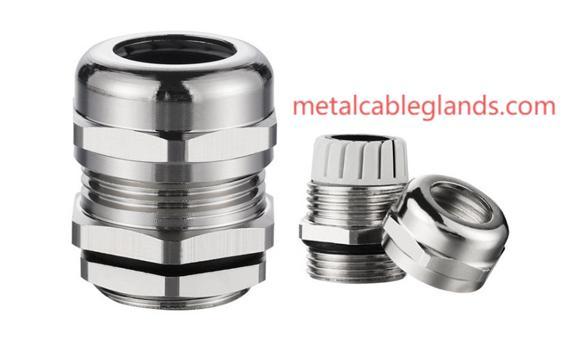As renewable energy projects expand across solar, wind, and hydroelectric fields, the demand for reliable and corrosion-resistant cable management components has increased dramatically. Among these essential elements, the Plastic Cable Gland plays a critical role in maintaining electrical safety and performance. Designed to provide effective sealing, strain relief, and environmental protection, the Plastic Cable Gland ensures the stability of power transmission systems operating under demanding outdoor conditions. Zhejiang Hongjuesi Connector Co., Ltd. has developed advanced gland solutions that align with the sustainability goals of renewable energy infrastructure while maintaining exceptional mechanical and thermal endurance.
In solar photovoltaic (PV) installations, hundreds or even thousands of cables connect panels, inverters, and control systems. These cables are continuously exposed to UV rays, dust, and fluctuating temperatures. Plastic cable glands, made from high-grade polyamide or reinforced thermoplastic, offer superior resistance to weathering, corrosion, and ultraviolet degradation. Unlike metallic alternatives that may oxidize or conduct unwanted current, plastic variants provide complete electrical insulation—ensuring safer and longer-lasting operation of solar systems. The non-conductive property also prevents arcing or short-circuiting in high-humidity regions, enhancing overall energy output stability.
For wind turbine applications, cable protection requirements are even more stringent. The nacelles and control panels at high altitudes experience intense mechanical stress and temperature variations. In these conditions, the precision engineering of Zhejiang Hongjuesi’s plastic cable glands delivers reliable strain relief and consistent sealing. Their flexible design allows them to accommodate vibration and motion without loosening, protecting the electrical infrastructure from mechanical damage or moisture ingress. Additionally, the use of flame-retardant materials adds an extra layer of safety, ensuring that systems remain compliant with global renewable energy safety standards.
Hydropower systems, often located in remote and humid environments, also rely on durable gland solutions. Water ingress poses a significant threat to electrical systems, potentially leading to equipment failure or safety hazards. Plastic cable glands with integrated sealing rings and waterproof membranes maintain IP68-rated protection, allowing submerged or moisture-prone connections to operate safely. Zhejiang Hongjuesi’s products undergo rigorous testing to guarantee that each gland can perform reliably in such demanding scenarios. The company’s focus on precision manufacturing ensures consistent quality and adaptability across various renewable installations.
Another major advantage of plastic glands in renewable energy projects is their weight reduction benefit. In large-scale installations—such as floating solar farms or offshore wind turbines—lighter components contribute to easier assembly and reduced structural load. This improves installation efficiency while lowering transportation and maintenance costs. Technicians also appreciate the user-friendly design, featuring quick-lock threads and adjustable seals that simplify assembly without specialized tools.
From an environmental perspective, the use of recyclable plastics aligns perfectly with the ethos of green energy. Zhejiang Hongjuesi integrates sustainable production practices, such as energy-efficient molding and material recycling systems, to minimize environmental impact. Their focus on eco-conscious design supports renewable energy developers aiming to reduce their overall carbon footprint. The result is a high-performance product that meets both functional and environmental objectives.
As renewable power generation scales globally, system reliability and long-term cost efficiency remain top priorities. Plastic cable glands help reduce maintenance intervals by resisting corrosion and retaining seal integrity over time. Their ability to maintain consistent compression under temperature cycling ensures that cable joints remain secure and waterproof for years. Furthermore, these glands support a wide range of cable diameters, offering flexibility for engineers designing hybrid systems that integrate solar, wind, and battery storage units.
In today’s renewable energy ecosystem, every component contributes to achieving greater energy efficiency and operational resilience. By providing durable, safe, and sustainable solutions, Zhejiang Hongjuesi Connector Co., Ltd. supports the long-term success of global renewable energy projects. For more information on their range of plastic cable glands and related products, please visit https://www.metalcableglands.com/ .



